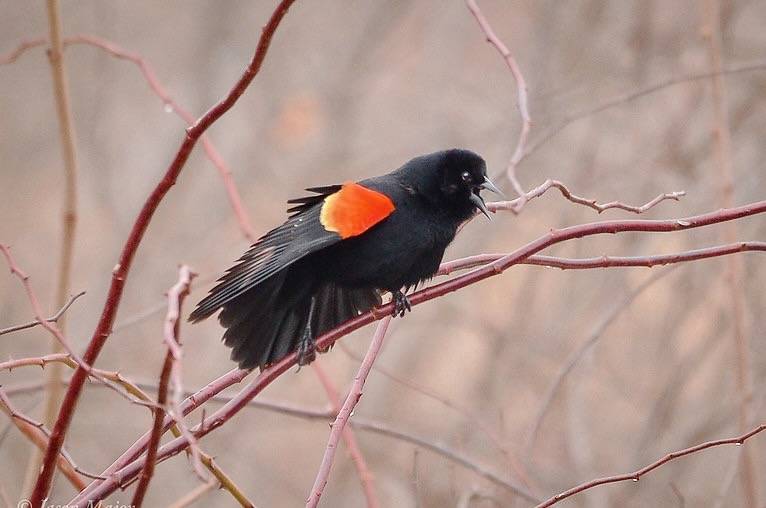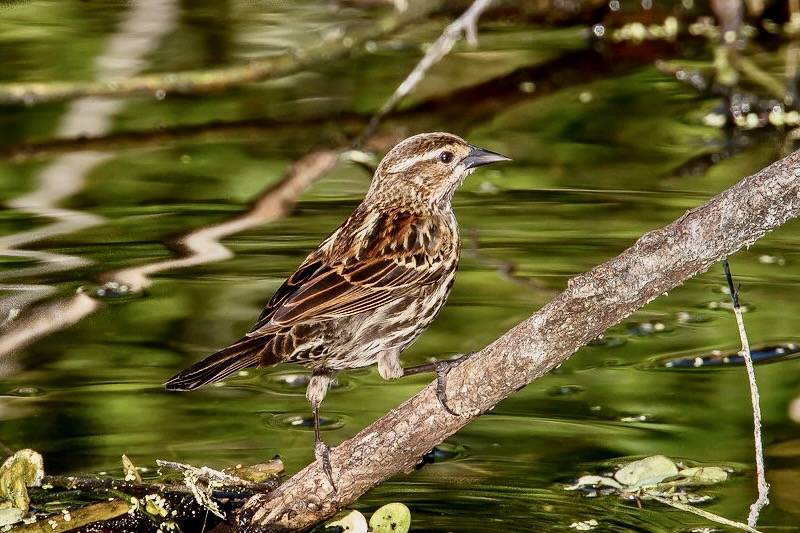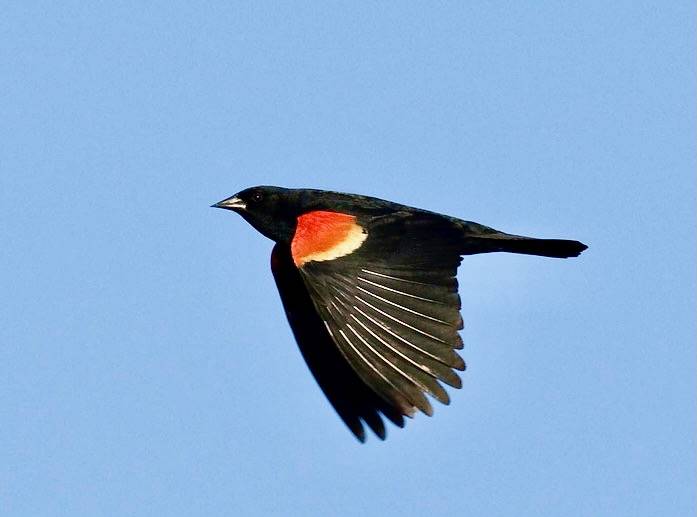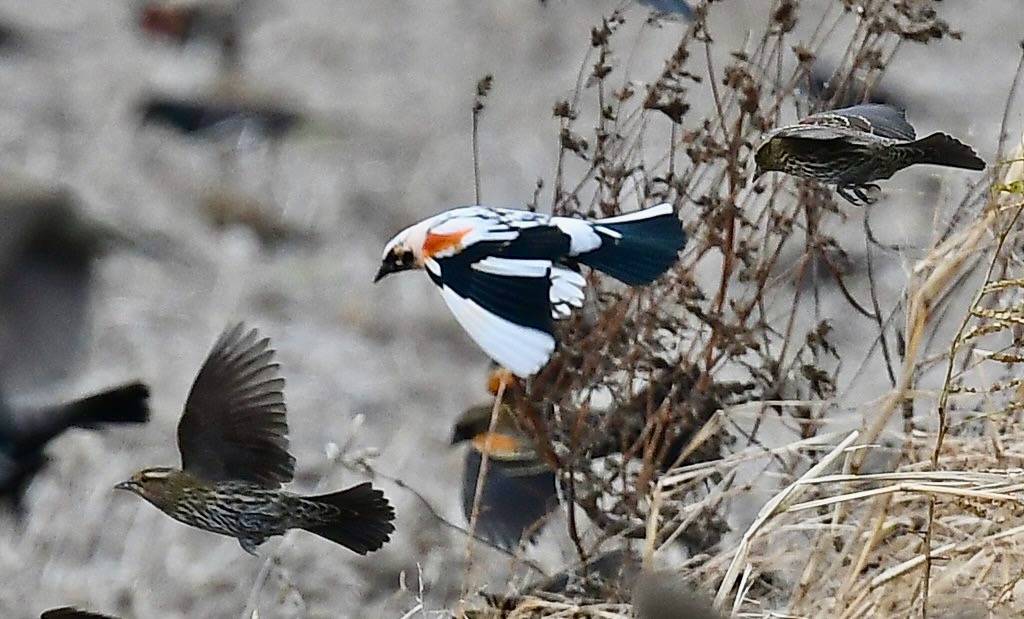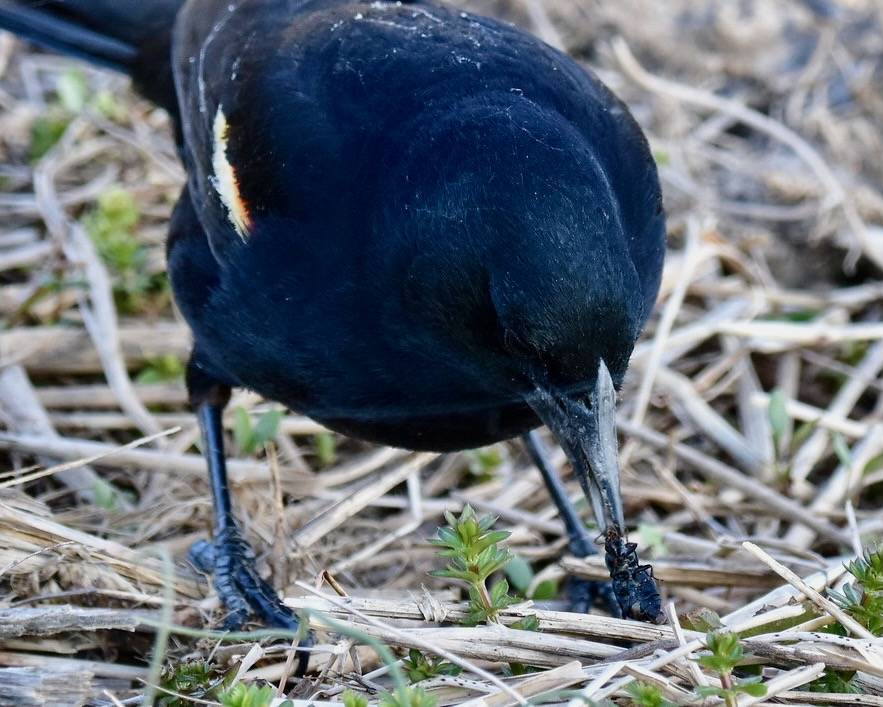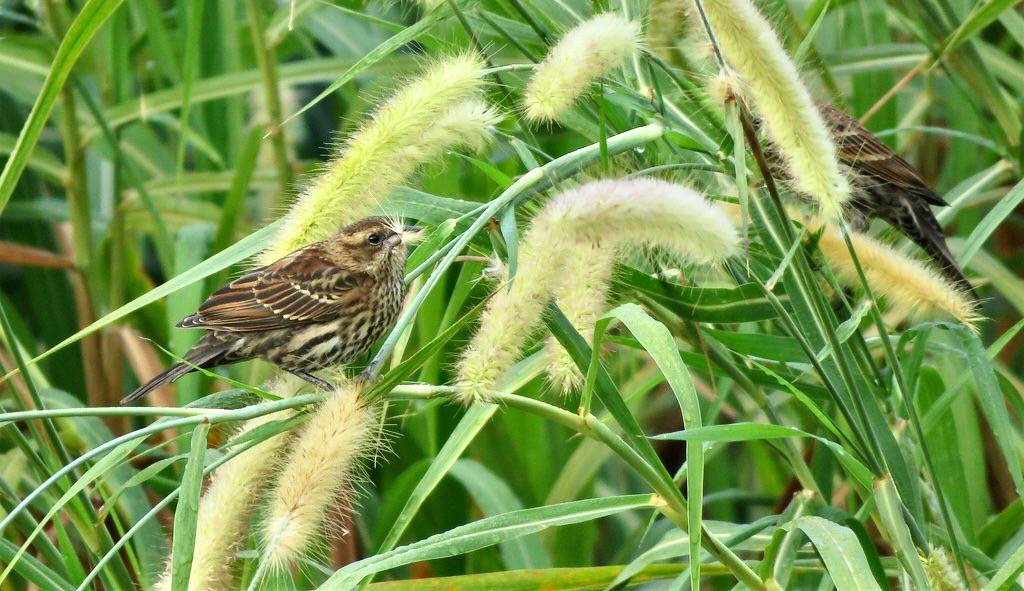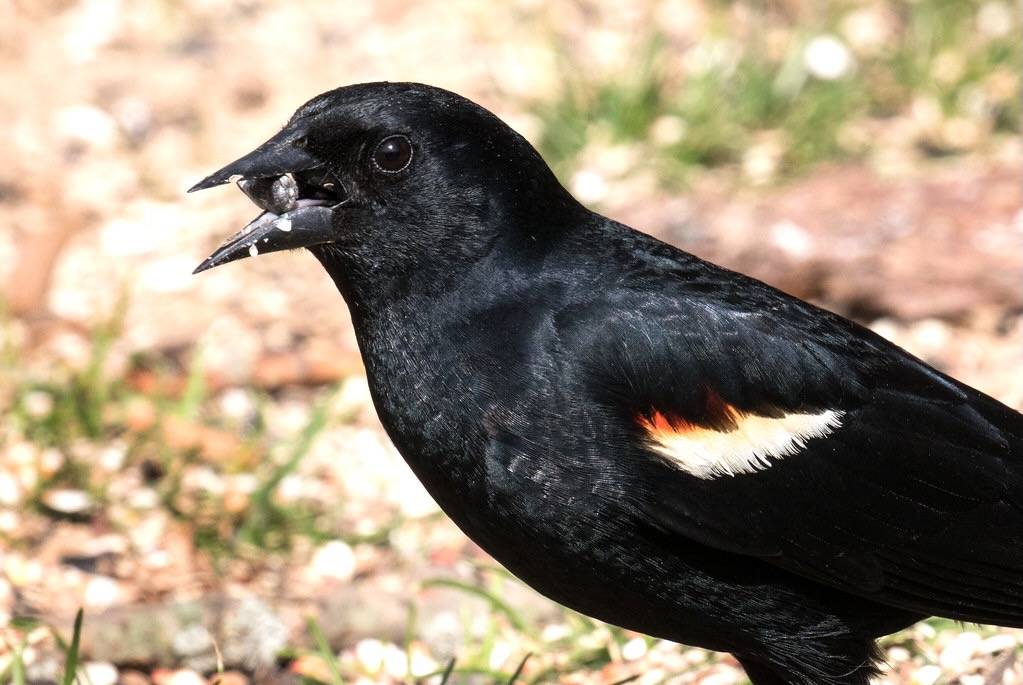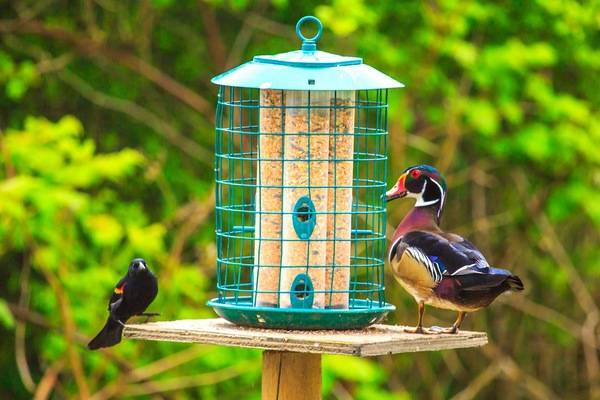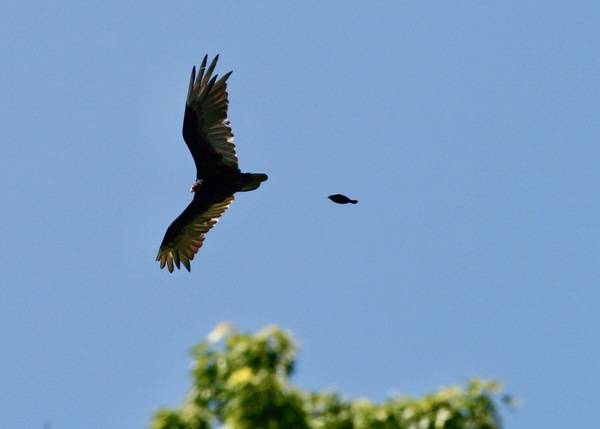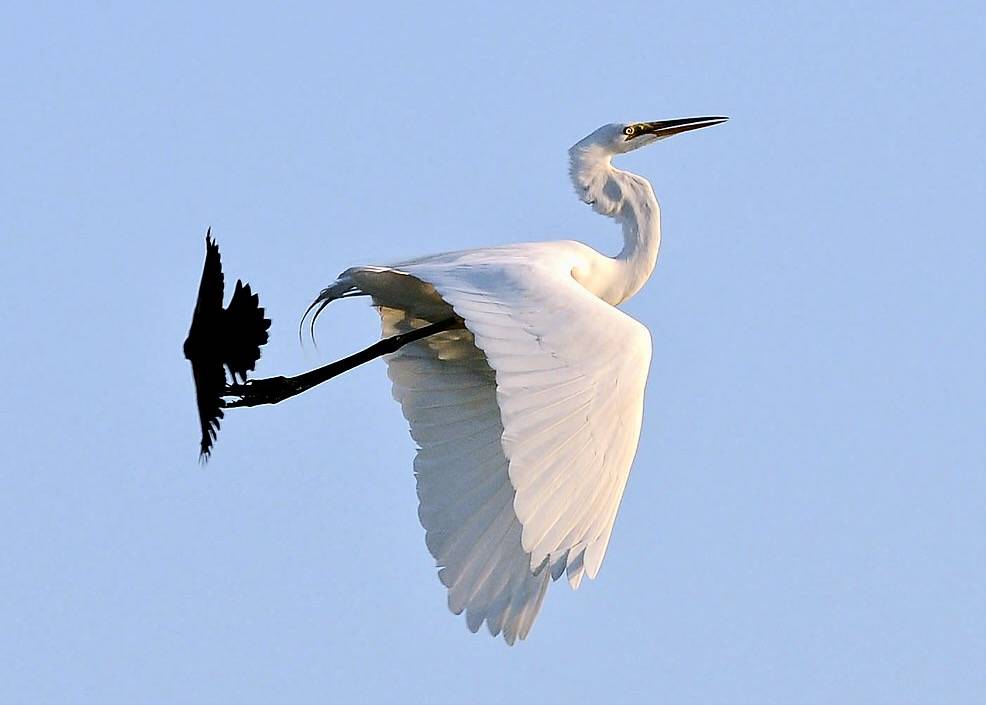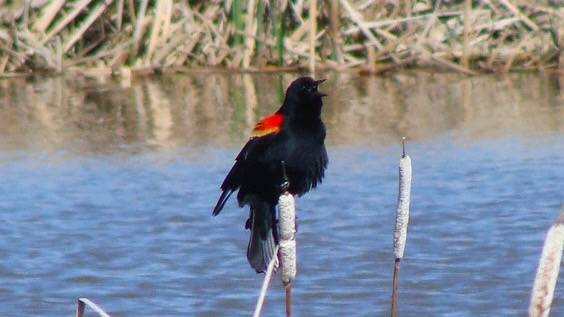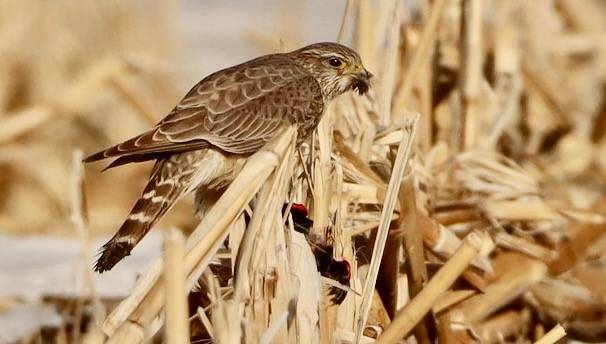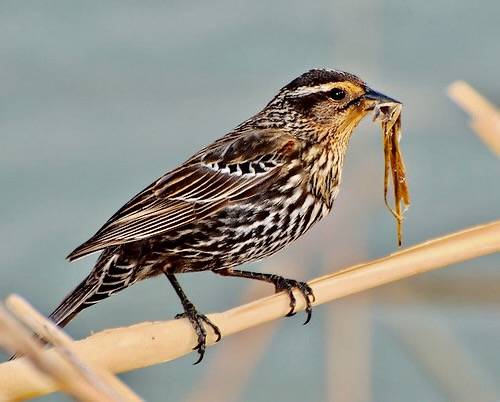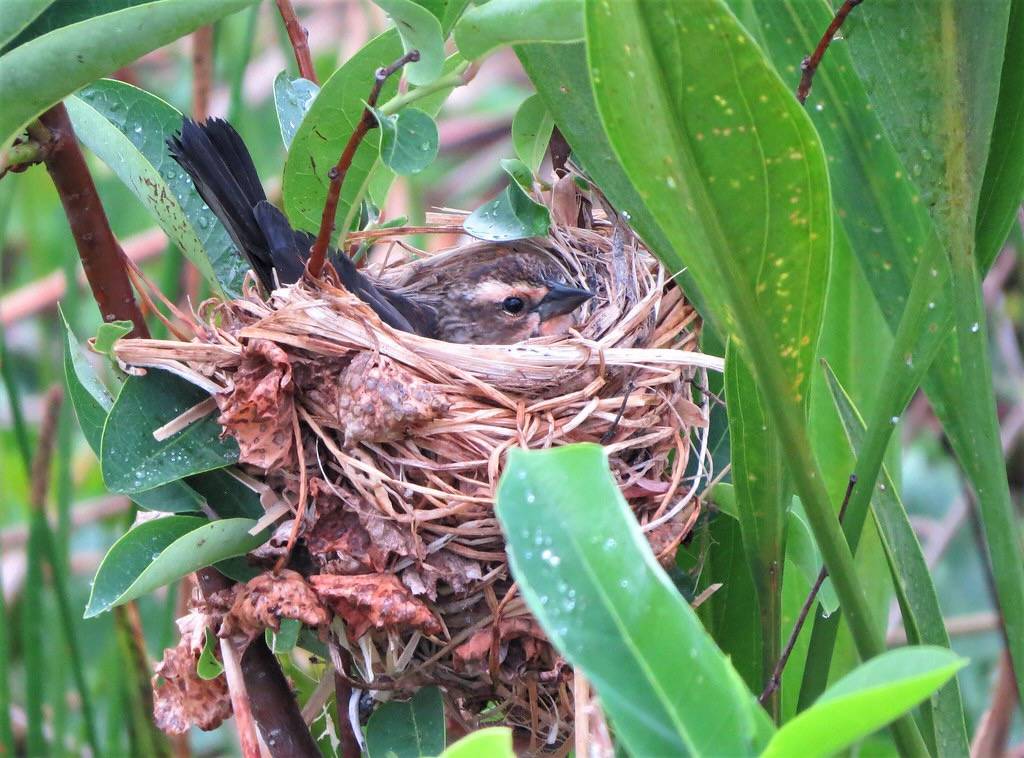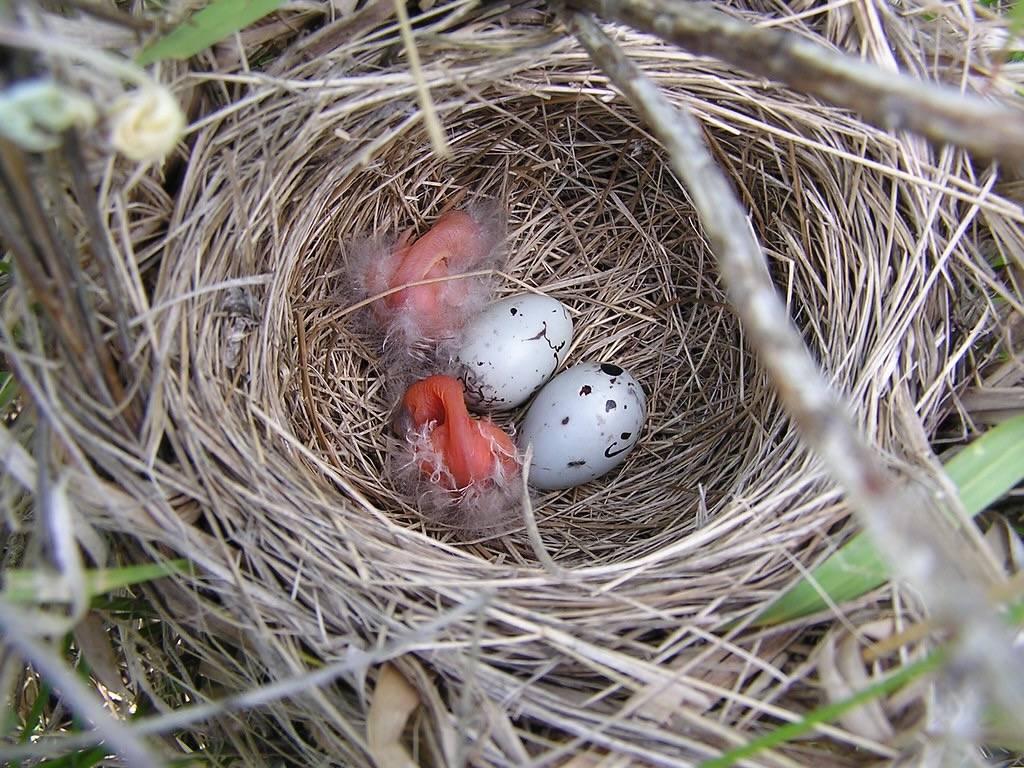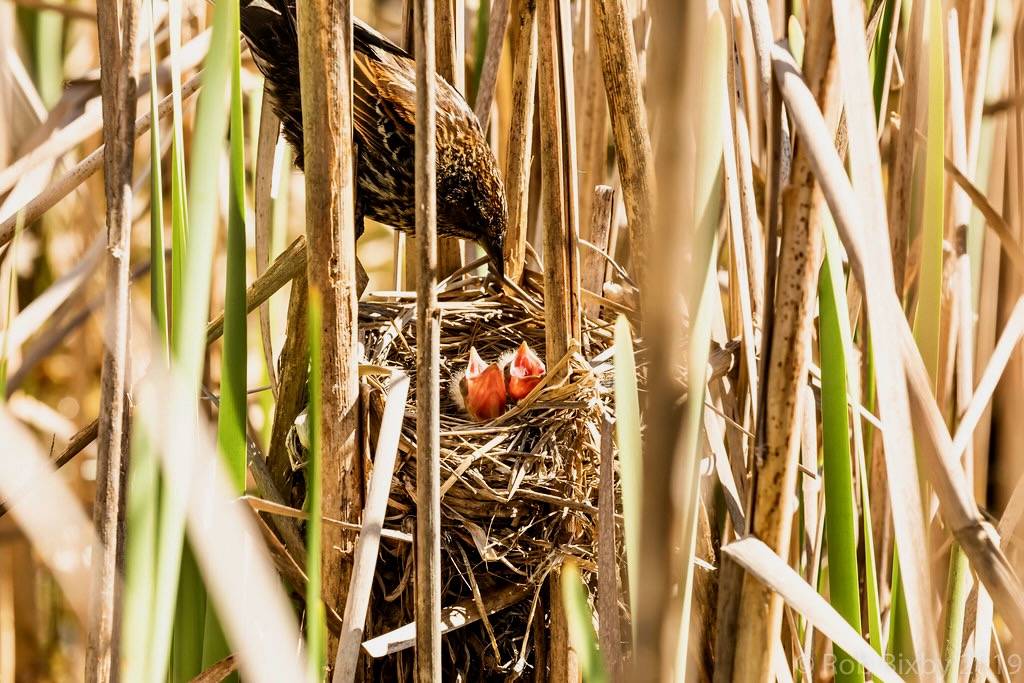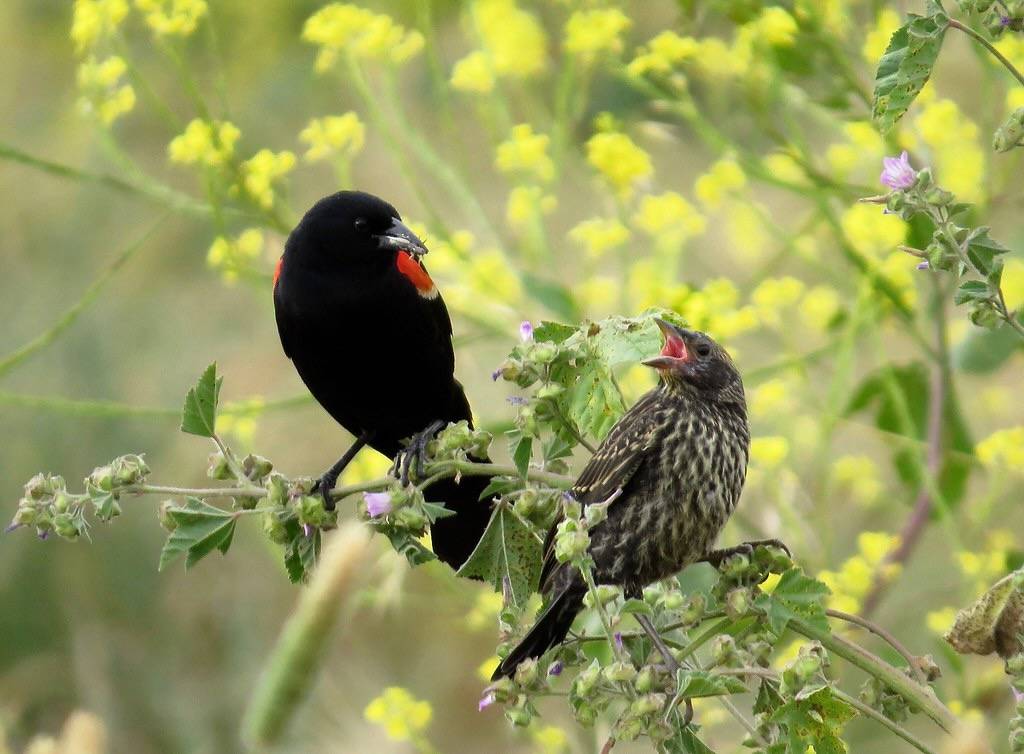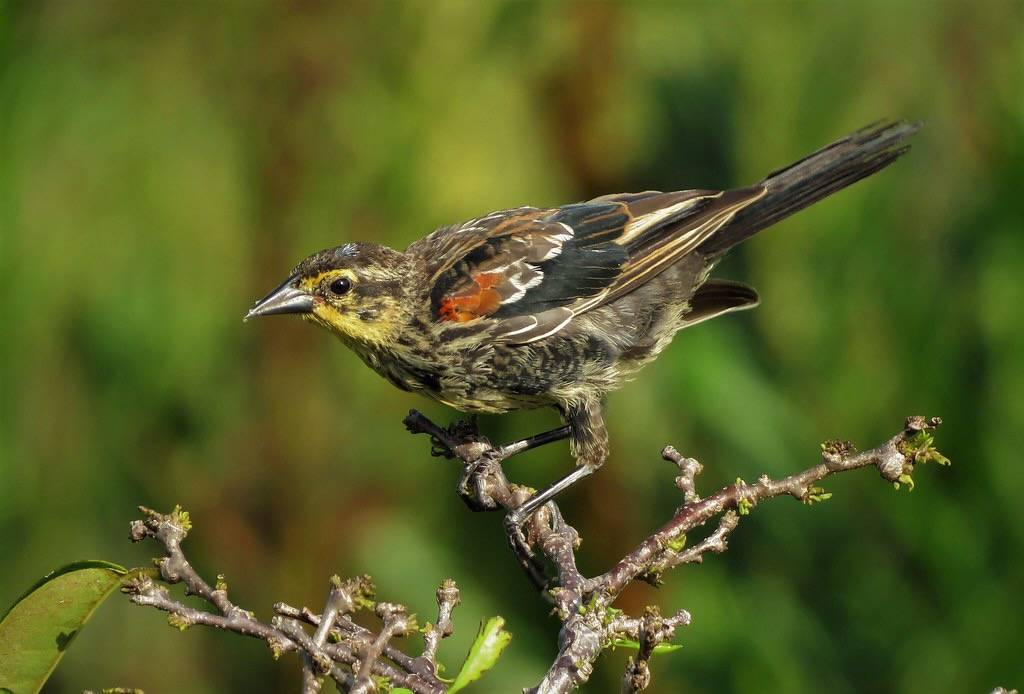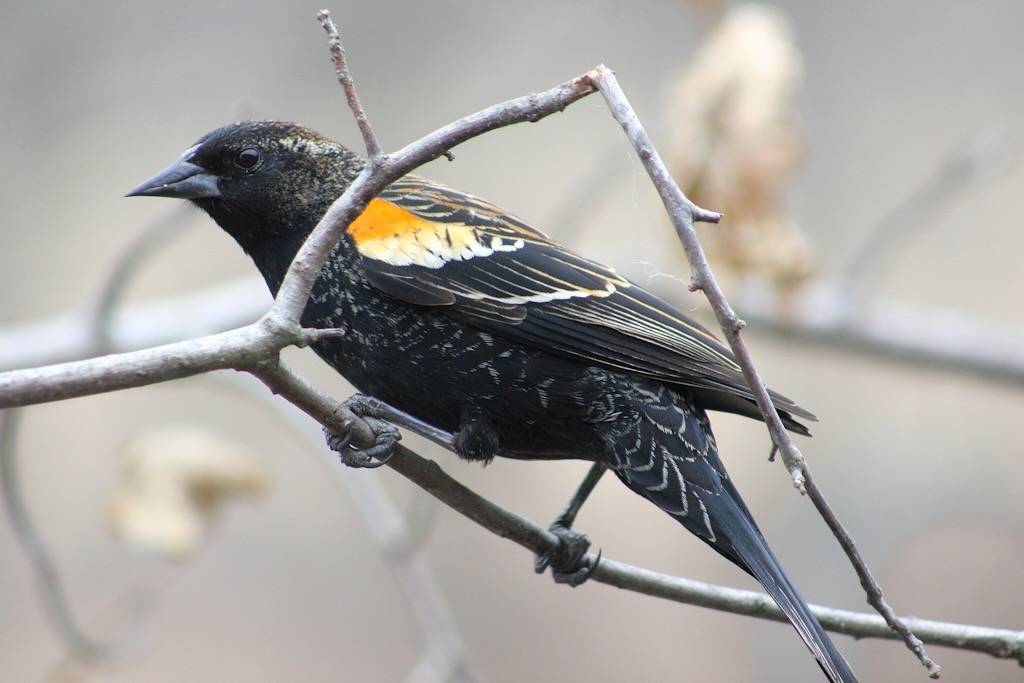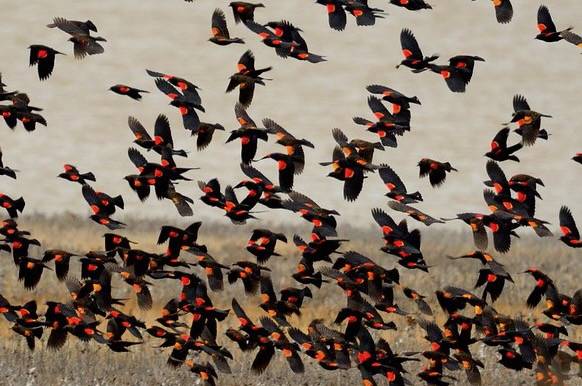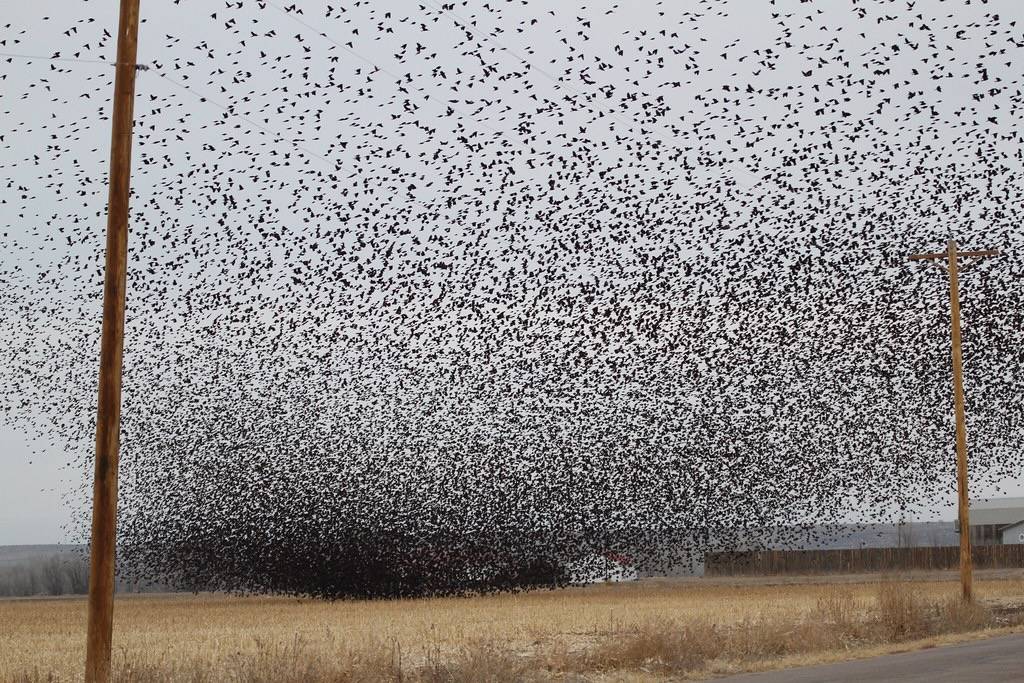Red-winged Blackbird
At one time, hearing or seeing a Red-winged Blackbird at Salter Grove meant it was spring or summer. Not any more! Since 2022, it has been recorded not just during the breeding season but every month of the year. Sightings are usually in or near the northern and southern wetland areas but Its piercing calls can be heard throughout the park.
It is a familiar bird and likely one of the most abundant species in North America. It nests in wetland or upland fields ranging from Southern Alaska to Central America. After breeding, northern individuals migrate in flocks of thousands to winter in the southern United States or Mexico. Although non-migratory, populations that breed in the southern part of its range form large winter roosts not too far from their breeding sites.
From early spring to late summer, a male sings continuously to attract mates and to defend his territory. As many as 15 females have been reported to breed within a single territory although the average is five females.
Throughout the breeding season of 2022 and 2023, as many as six singing males were censused in the northern and southern patches of common reed at Salter Grove. Unfortunately, females and nests were too well hidden in marshy vegetation to determine if any of the males had more than one mate.
The Red-winged Blackbird is omnivorous and varies its diet seasonally. During the breeding season, both adults and young consume insects voraciously, including large numbers of dragonflies, damselflies, butterflies, flies, spiders, insect larvae, and other invertebrates. The post-breeding diet consists mostly of fruits and seeds, and waste grain.
Historically, the Red-winged Blackbird nests in wetlands but over time, has expanded its breeding habitat to upland fields as natural vegetation became agricultural fields across North America. This population expansion has resulted in a complicated relationship with humans.
It is considered beneficial when it feeds heavily on agricultural weeds, or insect pests that infest orchards and agricultural fields. However, it is considered harmful when large flocks descend on crop plants such as corn and rice during their sensitive stages of development.
Population control of the Red-winged Blackbird was attempted as far back as 1667 by colonists in Massachusetts Bay where by law, a bachelor was not allowed to marry until he has killed six Red-winged Blackbirds. Both Native Americans and early settlers in the Great Lakes region guarded ripening corn crops around the clock from flocks.
Based on studies in Ohio, the state with the highest density of Red-winged Blackbirds, a 1980 report showed that agricultural fields nearest marshy habitat suitable for winter roosts suffered the highest amount of damage. However, the same wave of birds damaging corn crops in the north may be welcomed by farmers in the south because the migrants would feast upon and decimate the seeds of a noxious weed inhibiting the growth of soybean and cotton.
In 2022, a total of 711 acres of sweetcorn was reported for Rhode Island--a mere fraction compared to the vast cornfields of the Midwest. Nonetheless, a farmer can stand to lose 75% of the crop to marauding Red-winged Blackbirds. Rebeca Browne, a Plant Science professor at the University of Rhode Island, developed a modern day scarecrow that flashes battery-operated LED-based lasers onto corn tassels to keep birds at bay. Used in combination with distress calls and the calls of predators, as well as other tools, crop loss has been reduced to below 10%!
For more information:
https://www.allaboutbirds.org/guide/Red-wInsged_Blackbird
https://www.audubon.org/field-guide/bird/red-winged-blackbird
https://animaldiversity.org/accounts/Agelaius_phoeniceus/
https://en.wikipedia.org/wiki/Red-winged_blackbird
https://www.birdsbybent.com/////ch41-50/blackbir.html
https://apps.dtic.mil/sti/tr/pdf/ADA323286.pdf [Dolbeer, Richard A., 1980 Blackbirds and corn in Ohio. Resource publication, United states Fish and Wildlife Service; 136]
https://www.uri.edu/news/2019/08/uri-researcher-laser-scarecrows-successful-at-keeping-birds-from-eating-sweetcorn/

